Miami nice: the history & growth of Florida’s art ecosystem
Over the last two decades with the rise of Art Basel Miami Beach, the Florida city’s increasing importance to the international art market has risen alongside its population & architectural investment. But it’s a more complex landscape than just the cultural blue chip big hitters, so Zac Procter took on the onerous task of visiting the sun-drenched Florida city to report on not only the top-down arts ventures, but also exploring its bottom-up ecosystem history & future.
Since 2002, Art Basel Miami Beach has commanded
much of Florida’s cultural spotlight, but the art capital’s global
clout is the result of decades of grassroots activity, embedded in urban
development. A sense of identity and city-wide pride, arts, and culture are
infused in the everyday; fashion boutiques host art shows, residential
developments commission works of sculpture, and dining is often accompanied
with a side of live music and a bartender’s flair. It’s all part of the Miami
way of life, and the city seems to have been made for it.
The synergy between art and development is nothing new to Miami, where some of its biggest art collectors – including the city’s de facto creative director Craig Robins – are also some of its biggest real estate developers. Major players in the city’s development have a long history of working closely with local arts organisations to shape its landscape with, and for, creatives.
Once a place the art world had deemed a cultural backwater, Miami’s present-day role in shaping the global agenda is testament to its powerful vision for arts-led city-making. Even in the wake of funding cuts, its creatives are fighting back and coming out on top.
![]()
![]()
![]()
The marked arrival of events like Art Basel and Untitled Art – another fair, running in the city since 2012 – have undoubtedly, in recent years, bolstered Miami’s standing on the global cultural stage, but it is a rich, multi-cultural history of local arts and culture that has allowed these to land with such success. Miami Art Week, running each December, has never just been for collectors – its origins rooted in a palpable and genuine commitment to nurturing and promoting new artistic talents within the city’s established institutions.
The Design District, a neighbourhood comprising high-end fashion boutiques, Michelin restaurants, and several galleries, is today an undisputed commercial success, but the site on which it sits was home to a crucial nonprofit landscape. It includes Locust Projects, which still stands as the city’s longest-running alternative art space, who first arrived in the Design District within an empty storefront, now acting as one of many incubators supporting artists with project grants, residencies, exhibition spaces, and running summer schools for young creatives, as well as providing pro bono administrative and legal advice.
![]()
![]()
![]()
In comparison with other global cultural capitals, Miami’s grassroots spirit is fighting relatively strong against modern displacement and gentrification. Where necessary, with non-profits at the helm, community-led urban development is delivering affordable creative spaces while also increasing land values. Locust Projects’ recent move to Little River warehouse district marks a shift in established arts organisations pushing ever further into historically undervalued and underserved neighbourhoods. The district of Wynwood, the city’s epicentre for street art, was once just that – a fading former industrial area that is today home to over 70 galleries, collections, and museums, while locally organised art walks and bicycle tours of murals and graffiti draw thousands.
Areas like Little River look set for the same fate. Like Locust Projects, Oolite Arts – founded on the concept of repurposing dilapidated storefronts into meanwhile studio spaces for artists – is relocating to the district and set to open an impressive campus designed by Barcelona-based architects, Barozzi Veiga, already likened to a “creative village”. The organisation is working closely with real estate firm MVW, a major player and local partner in Little River’s reinvention. It is this apparent genuine and concerted effort of developers, authorities, and local government to work closely with cultural organisations that is keeping artists in studios and culture overflowing in the streets. For many cities, the concept is unfamiliar.
![]()
![]()
![]()
“Miami’s creatives were always the underdogs,” says artist Najja Moon, sitting in her Wynwood studio at Bakehouse Art Complex – another non-profit incubator providing affordable studios and workspaces for Miami’s artists. “We were determined to rival New York and L.A., and at last, it feels like we have,” she adds. Originally an art deco-era industrial bakery, the shuttered factory was handed over in the early 1980s to displaced artists and is now home to over 100 resident and associated creatives. “We’re run by artists, for artists,” explains Cathy Leff, Executive Director of the Bakehouse, “The city has changed so much, and we’re always asking ourselves: ‘What do Miami’s artists need now?’”
![]()
![]()
![]()
It is figures like Leff, previously Director of The Wolfsonian, who know exactly what Miami’s artists need, and have spent decades working to embed arts and culture within the city’s urban fabric. Just one of the projects she has overseen is Miami’s Art in Public Places initiative, a requirement established in 1973 that 1.5 per cent of the capital cost of new county buildings be put towards the purchase or commission of artwork.
Since its inception, the trust has acquired or commissioned over 1,000 works of art, installed across Miami’s airports and metro stations as well as public parks, fire and police stations, libraries, residential developments, courthouses, and community health centres – so, pretty much everywhere.
In 2019, Miami Beach committed to a staggering $7 million investment in artwork around the renovated convention centre’s grounds – the largest single percent-for-art purchase in U.S. history – while a talk at Art Basel this past December asked: “What can public art do?”. The answer, according to Miami, is quite a lot, actually; ordinary civic spaces become stimulating cultural environments that reflect and reinforce the city’s quality and enjoyment of life.
![]()
![]()
![]()
Craig Robins is another figure who, like Cathy Leff, has played a defining role in the strategic investment of arts-driven development across the city. Entrepreneur, real estate developer. and art collector turned creative visionary, Robins largely led more than a decade of development in Miami’s Design District – now a roaring creative and commercial success. A major cultural philanthropist, he is also co-founder of the Institute of Contemporary Art and Design Miami, all while in his role as CEO of real estate developer Dacra.
Watching the area fall into disrepair by the late 1980s and 90s, Robins was determined to see it brought back into its prime. He began buying run-down buildings in the 18 square block site, overseeing public-private investment and a rise in footfall through the 2000s before developer Dacra and private equity firm L Catterton formed a partnership in 2010, developing the Design District into one city-making destination – which today is thriving.
![]()
![]()
![]()
Anchor tenants, predominantly in luxury fashion, guarantee the neighbourhood’s commercial viability while public art commissions, live music, and free galleries are given a home at the city’s cultural epicentre. The district’s offer is diverse and mixed-use – the handiwork of an experienced developer – and reflects Miami’s appreciation of creativity in all its forms: dining and bartending, art and sculpture, music and fashion. Despite its commerciality, the area hasn’t forgotten its grassroots: venues like Swampspace, launched in 2005, offer emerging visual and performance artists room to exhibit. It has hosted student shows and, at the same time, exhibitions featuring the works of major Miami artists Bhakti Baxter and Daniel Arsham.
Robins’ work speaks to a wider trend in Miami’s real estate, that is fast emerging across the city. One of the Unites States’ most prominent developers, Kilroy, declares on its website that it “has a love affair with great art”; Florida real-estate firm One Sotheby’s has announced its own in-house art advisory; and the $6 billion Miami Worldcenter, the second largest urban mixed-use development in the country, only behind New York’s Hudson Yards, is commissioning major vibrant multi-cultural artwork and sculpture. In short, agents, investors, and developers are coming to understand how art, like real estate, is an asset in itself.
While much of this is pointedly targeted at the ultra-wealthy – developer Eduardo Costantini credits two outdoor Jeff Koons sculptures to the success of one of its luxury complexes – importantly, not all of it is. A study by CODAworx, which connects artists with projects and commissioners, found that public art commissions in the U.S. last year totalled $4.4 billion. The trend is not only enhancing development, and quality of everyday life, but raising the fortunes of artists too.
![]()
![]()
![]()
Once dismissed as a mere tropical getaway, Miami is an increasingly popular place to live; since the first Art Basel Miami Beach, the city’s population has risen by 22 per cent. Concurrently, and unsurprisingly, the cost of living has soared – a recent study found the average monthly rent on a one-bedroom apartment had increased by 80 percent since 2019. Only Boston, San Francisco and the New York City area had higher rents.
Miami’s art scene is no longer the new kid on the block, and its creatives are waking up to adult realities. Contemporary urban challenges that have long worried its older European siblings – Paris, London and Berlin – are beginning to take hold. Thanks to non-profits and capital investment, the city’s studio and exhibition spaces are aplenty, but calls from all corners of the industry for a new focus on housing are growing fast. Perhaps with soft power come hard truths.
Oolite Arts has added a housing stipend to its core studio residency program, hoping to set an example, while Bakehouse Art Complex has announced its Next Generation plan, which will develop and expand the site to include mixed-income housing. But, weighing in, Craig Robins is vocal in his stance that affordable housing is not enough, arguing that political leaders must put financing behind ownership projects. After governor Ron DeSantis’ devastating cut to all $32m in arts funding from Florida's 2025 budget, support seems unlikely to come from the state.
![]()
![]()
![]()
However, Miami is better equipped than it might first let on. Delivering affordable space at scale is something the city is well versed in, and that its most vocal leaders have at the top of their agenda. The same commitment to community and work in partnership, across sectors, that Miami’s cultural scene was founded on might be the answer to securing the city’s future; there is already a concerted effort to drive the development of housing through joint public-private partnerships, mixed-income communities and substantial land donations – non-profit Miami Homes For All is spearheading a broad affordable housing initiative called Connecting Capital and Community.
In the process of development, the city must ensure that it doesn’t lose sight of what has made it great. While other global capitals focus on the short-term and look at housing delivery merely as a numbers game, Miami’s focus on embedding arts at the heart of development means it has a chance to offer places where people actually want to live. This is regeneration that will last generations, and neighbourhoods that could have longevity.
![]()
![]()
![]()
“Our city is beginning to feel the ramifications of its own success,” Cathy Leff concludes. Its appeal is drawing artists and investors alike, and its global clout is the envy of struggling art capitals – Berlin is the latest to cry “Kulturkrise” – but rising rents and cost of living mean an uncertain future for many.
Miami’s creatives are no longer the underdogs; the city’s art scene is all grown up, and modern urban challenges mean its future is undetermined. But for a creative capital, surely creative solutions are not in short supply. If one thing is for certain it’s that Miami is in safe hands. Its leaders, philanthropists, and developers at the helm – true to the spirit and promise of the city’s grassroots – understand the importance of cultural custodianship, embedded from the ground up.
The synergy between art and development is nothing new to Miami, where some of its biggest art collectors – including the city’s de facto creative director Craig Robins – are also some of its biggest real estate developers. Major players in the city’s development have a long history of working closely with local arts organisations to shape its landscape with, and for, creatives.
Once a place the art world had deemed a cultural backwater, Miami’s present-day role in shaping the global agenda is testament to its powerful vision for arts-led city-making. Even in the wake of funding cuts, its creatives are fighting back and coming out on top.



figs.i-iii
NOT JUST FOR COLLECTORS
The marked arrival of events like Art Basel and Untitled Art – another fair, running in the city since 2012 – have undoubtedly, in recent years, bolstered Miami’s standing on the global cultural stage, but it is a rich, multi-cultural history of local arts and culture that has allowed these to land with such success. Miami Art Week, running each December, has never just been for collectors – its origins rooted in a palpable and genuine commitment to nurturing and promoting new artistic talents within the city’s established institutions.
The Design District, a neighbourhood comprising high-end fashion boutiques, Michelin restaurants, and several galleries, is today an undisputed commercial success, but the site on which it sits was home to a crucial nonprofit landscape. It includes Locust Projects, which still stands as the city’s longest-running alternative art space, who first arrived in the Design District within an empty storefront, now acting as one of many incubators supporting artists with project grants, residencies, exhibition spaces, and running summer schools for young creatives, as well as providing pro bono administrative and legal advice.



figs.iv-vi
In comparison with other global cultural capitals, Miami’s grassroots spirit is fighting relatively strong against modern displacement and gentrification. Where necessary, with non-profits at the helm, community-led urban development is delivering affordable creative spaces while also increasing land values. Locust Projects’ recent move to Little River warehouse district marks a shift in established arts organisations pushing ever further into historically undervalued and underserved neighbourhoods. The district of Wynwood, the city’s epicentre for street art, was once just that – a fading former industrial area that is today home to over 70 galleries, collections, and museums, while locally organised art walks and bicycle tours of murals and graffiti draw thousands.
Areas like Little River look set for the same fate. Like Locust Projects, Oolite Arts – founded on the concept of repurposing dilapidated storefronts into meanwhile studio spaces for artists – is relocating to the district and set to open an impressive campus designed by Barcelona-based architects, Barozzi Veiga, already likened to a “creative village”. The organisation is working closely with real estate firm MVW, a major player and local partner in Little River’s reinvention. It is this apparent genuine and concerted effort of developers, authorities, and local government to work closely with cultural organisations that is keeping artists in studios and culture overflowing in the streets. For many cities, the concept is unfamiliar.
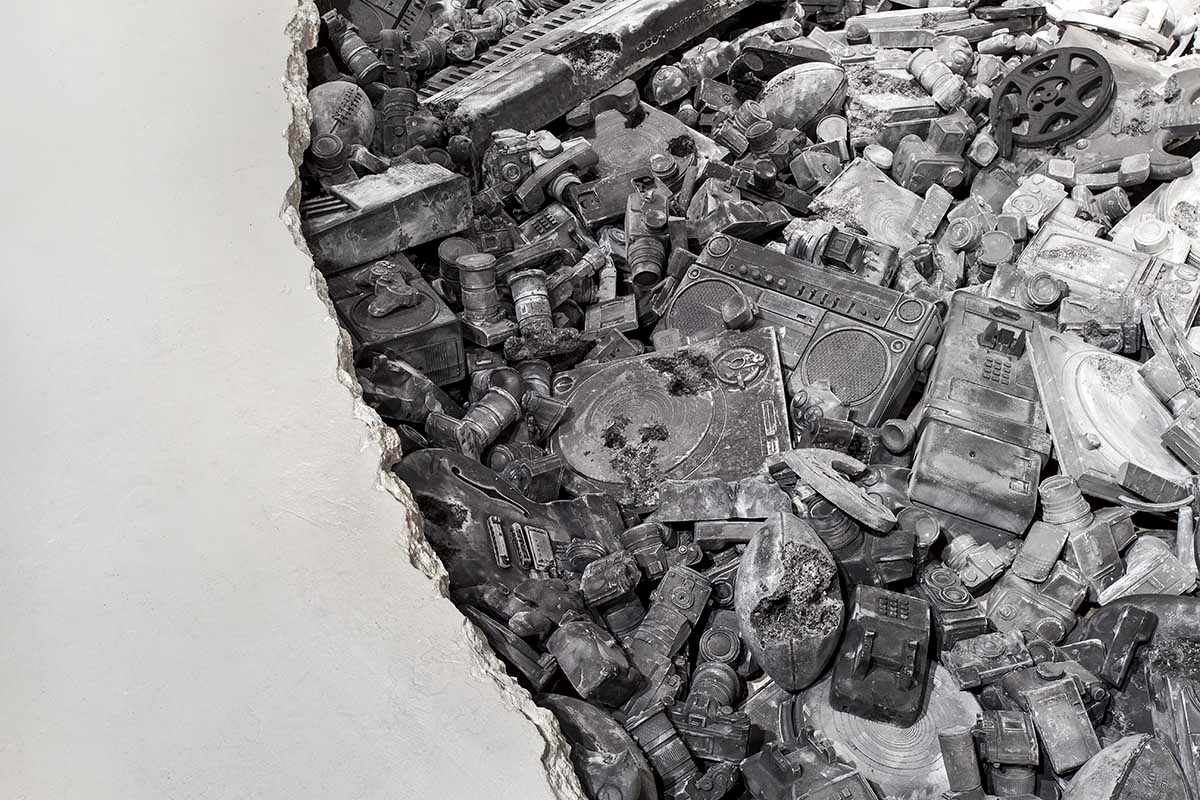

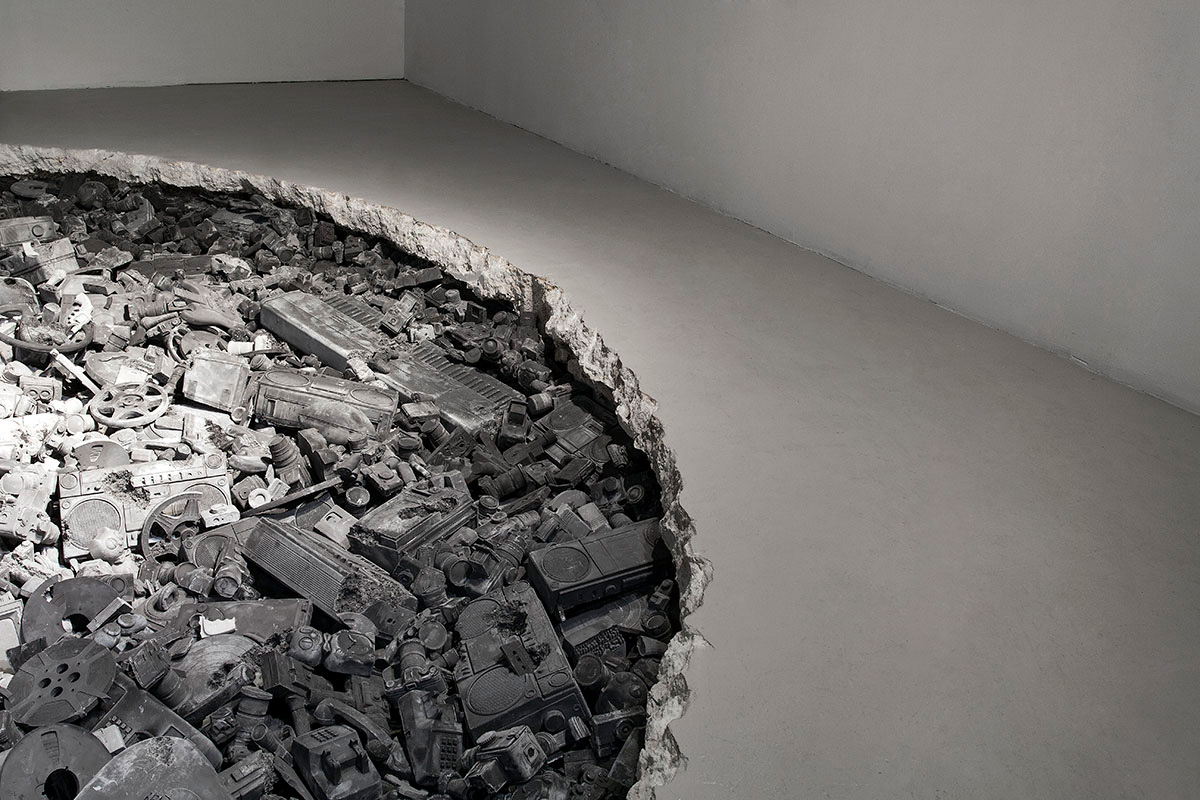
figs.vii-ix
SPACE TO CREATE
“Miami’s creatives were always the underdogs,” says artist Najja Moon, sitting in her Wynwood studio at Bakehouse Art Complex – another non-profit incubator providing affordable studios and workspaces for Miami’s artists. “We were determined to rival New York and L.A., and at last, it feels like we have,” she adds. Originally an art deco-era industrial bakery, the shuttered factory was handed over in the early 1980s to displaced artists and is now home to over 100 resident and associated creatives. “We’re run by artists, for artists,” explains Cathy Leff, Executive Director of the Bakehouse, “The city has changed so much, and we’re always asking ourselves: ‘What do Miami’s artists need now?’”



figs.x-xii
It is figures like Leff, previously Director of The Wolfsonian, who know exactly what Miami’s artists need, and have spent decades working to embed arts and culture within the city’s urban fabric. Just one of the projects she has overseen is Miami’s Art in Public Places initiative, a requirement established in 1973 that 1.5 per cent of the capital cost of new county buildings be put towards the purchase or commission of artwork.
Since its inception, the trust has acquired or commissioned over 1,000 works of art, installed across Miami’s airports and metro stations as well as public parks, fire and police stations, libraries, residential developments, courthouses, and community health centres – so, pretty much everywhere.
In 2019, Miami Beach committed to a staggering $7 million investment in artwork around the renovated convention centre’s grounds – the largest single percent-for-art purchase in U.S. history – while a talk at Art Basel this past December asked: “What can public art do?”. The answer, according to Miami, is quite a lot, actually; ordinary civic spaces become stimulating cultural environments that reflect and reinforce the city’s quality and enjoyment of life.

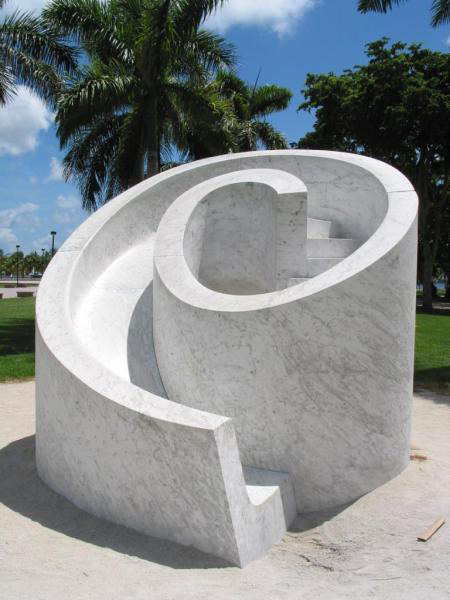
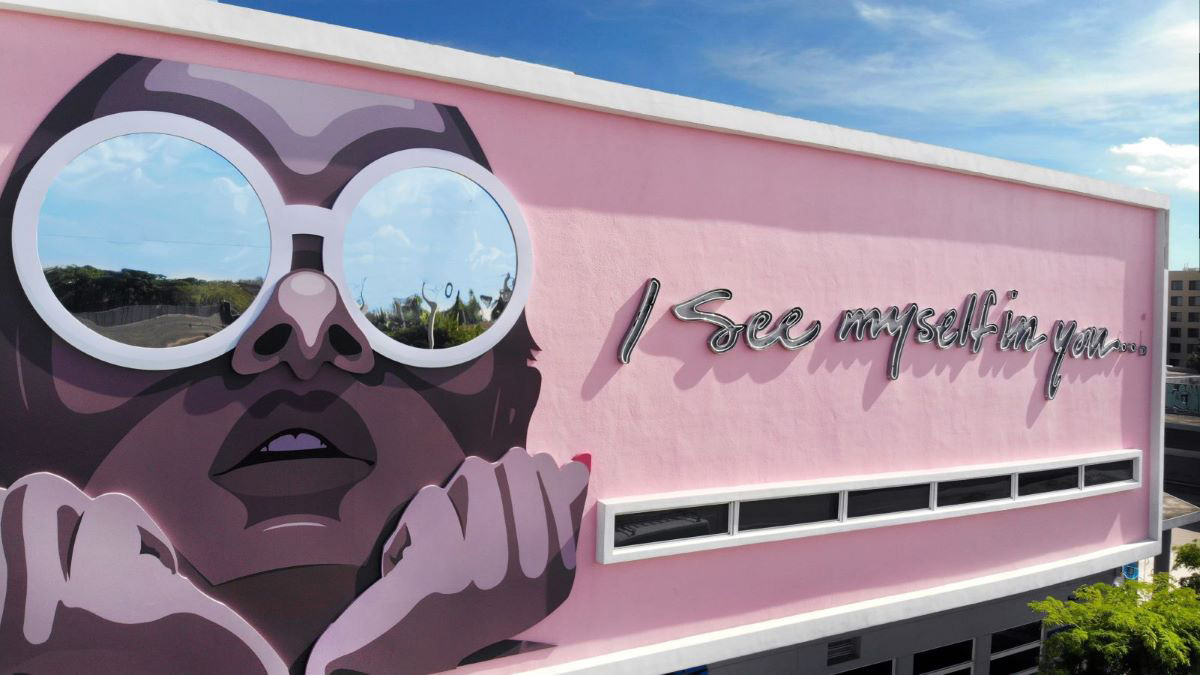
figs.xiii-xv
COLLECTORS TURNED DEVELOPERS
Craig Robins is another figure who, like Cathy Leff, has played a defining role in the strategic investment of arts-driven development across the city. Entrepreneur, real estate developer. and art collector turned creative visionary, Robins largely led more than a decade of development in Miami’s Design District – now a roaring creative and commercial success. A major cultural philanthropist, he is also co-founder of the Institute of Contemporary Art and Design Miami, all while in his role as CEO of real estate developer Dacra.
Watching the area fall into disrepair by the late 1980s and 90s, Robins was determined to see it brought back into its prime. He began buying run-down buildings in the 18 square block site, overseeing public-private investment and a rise in footfall through the 2000s before developer Dacra and private equity firm L Catterton formed a partnership in 2010, developing the Design District into one city-making destination – which today is thriving.



figs.xvi-xviii
Anchor tenants, predominantly in luxury fashion, guarantee the neighbourhood’s commercial viability while public art commissions, live music, and free galleries are given a home at the city’s cultural epicentre. The district’s offer is diverse and mixed-use – the handiwork of an experienced developer – and reflects Miami’s appreciation of creativity in all its forms: dining and bartending, art and sculpture, music and fashion. Despite its commerciality, the area hasn’t forgotten its grassroots: venues like Swampspace, launched in 2005, offer emerging visual and performance artists room to exhibit. It has hosted student shows and, at the same time, exhibitions featuring the works of major Miami artists Bhakti Baxter and Daniel Arsham.
Robins’ work speaks to a wider trend in Miami’s real estate, that is fast emerging across the city. One of the Unites States’ most prominent developers, Kilroy, declares on its website that it “has a love affair with great art”; Florida real-estate firm One Sotheby’s has announced its own in-house art advisory; and the $6 billion Miami Worldcenter, the second largest urban mixed-use development in the country, only behind New York’s Hudson Yards, is commissioning major vibrant multi-cultural artwork and sculpture. In short, agents, investors, and developers are coming to understand how art, like real estate, is an asset in itself.
While much of this is pointedly targeted at the ultra-wealthy – developer Eduardo Costantini credits two outdoor Jeff Koons sculptures to the success of one of its luxury complexes – importantly, not all of it is. A study by CODAworx, which connects artists with projects and commissioners, found that public art commissions in the U.S. last year totalled $4.4 billion. The trend is not only enhancing development, and quality of everyday life, but raising the fortunes of artists too.



figs.xix-xxi
SOFT POWER & CITY-MAKING
Once dismissed as a mere tropical getaway, Miami is an increasingly popular place to live; since the first Art Basel Miami Beach, the city’s population has risen by 22 per cent. Concurrently, and unsurprisingly, the cost of living has soared – a recent study found the average monthly rent on a one-bedroom apartment had increased by 80 percent since 2019. Only Boston, San Francisco and the New York City area had higher rents.
Miami’s art scene is no longer the new kid on the block, and its creatives are waking up to adult realities. Contemporary urban challenges that have long worried its older European siblings – Paris, London and Berlin – are beginning to take hold. Thanks to non-profits and capital investment, the city’s studio and exhibition spaces are aplenty, but calls from all corners of the industry for a new focus on housing are growing fast. Perhaps with soft power come hard truths.
Oolite Arts has added a housing stipend to its core studio residency program, hoping to set an example, while Bakehouse Art Complex has announced its Next Generation plan, which will develop and expand the site to include mixed-income housing. But, weighing in, Craig Robins is vocal in his stance that affordable housing is not enough, arguing that political leaders must put financing behind ownership projects. After governor Ron DeSantis’ devastating cut to all $32m in arts funding from Florida's 2025 budget, support seems unlikely to come from the state.

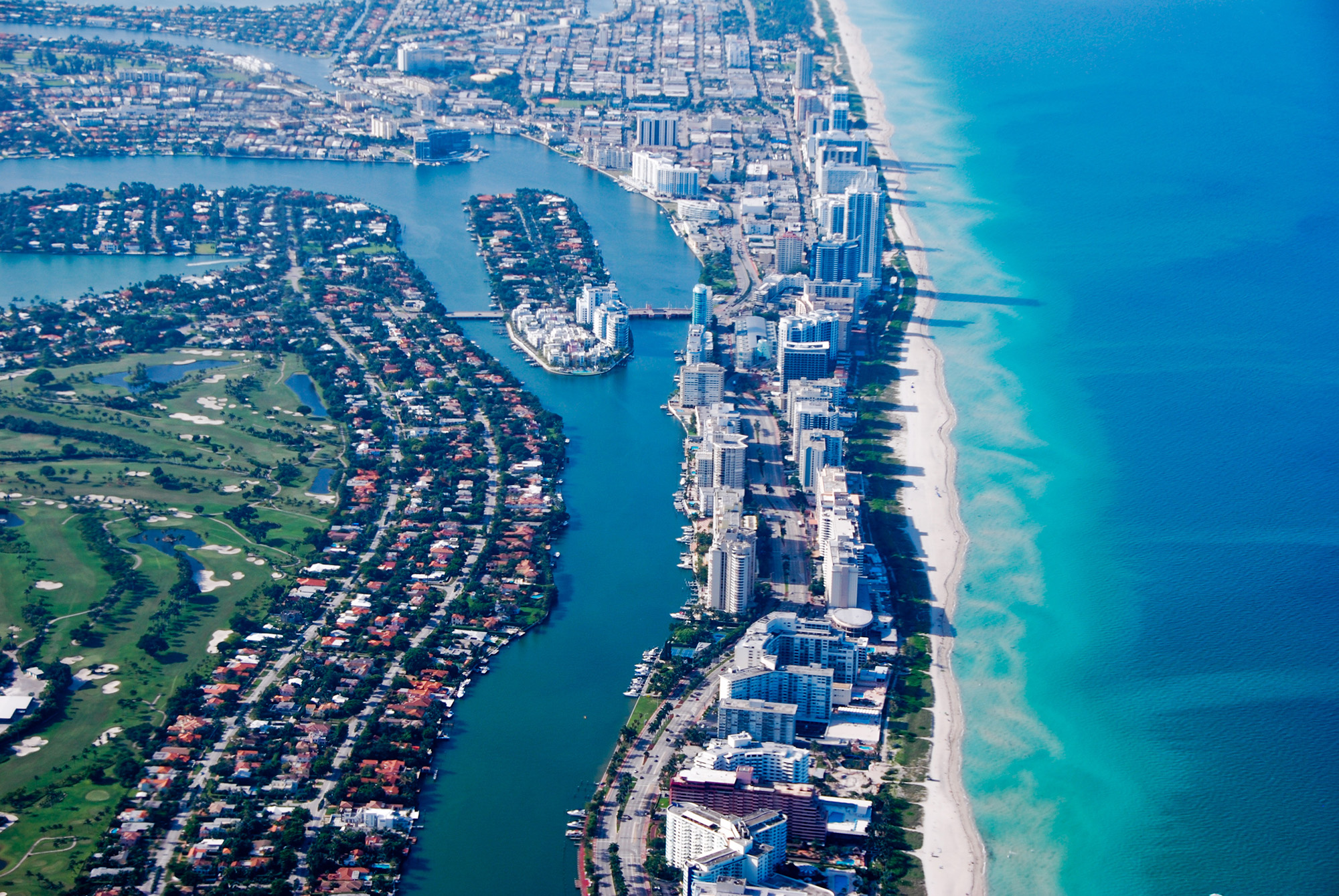

figs.xxii-xiv
However, Miami is better equipped than it might first let on. Delivering affordable space at scale is something the city is well versed in, and that its most vocal leaders have at the top of their agenda. The same commitment to community and work in partnership, across sectors, that Miami’s cultural scene was founded on might be the answer to securing the city’s future; there is already a concerted effort to drive the development of housing through joint public-private partnerships, mixed-income communities and substantial land donations – non-profit Miami Homes For All is spearheading a broad affordable housing initiative called Connecting Capital and Community.
In the process of development, the city must ensure that it doesn’t lose sight of what has made it great. While other global capitals focus on the short-term and look at housing delivery merely as a numbers game, Miami’s focus on embedding arts at the heart of development means it has a chance to offer places where people actually want to live. This is regeneration that will last generations, and neighbourhoods that could have longevity.



figs.xv-xvii
CULTURAL CUSTODIANS
“Our city is beginning to feel the ramifications of its own success,” Cathy Leff concludes. Its appeal is drawing artists and investors alike, and its global clout is the envy of struggling art capitals – Berlin is the latest to cry “Kulturkrise” – but rising rents and cost of living mean an uncertain future for many.
Miami’s creatives are no longer the underdogs; the city’s art scene is all grown up, and modern urban challenges mean its future is undetermined. But for a creative capital, surely creative solutions are not in short supply. If one thing is for certain it’s that Miami is in safe hands. Its leaders, philanthropists, and developers at the helm – true to the spirit and promise of the city’s grassroots – understand the importance of cultural custodianship, embedded from the ground up.


